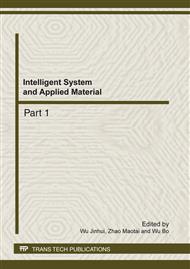p.17
p.23
p.27
p.31
p.36
p.42
p.47
p.52
p.57
Numerical Simulation and Prediction of High Fluorine Groundwater Transport in Zhangye Basin
Abstract:
Simulate Feflow with finite element method, and establish flow model and solute transport model of high fluorine groundwater area in Zhangye Basin. Predicting groundwater system response under different exploitation scheme, and evaluating the risk of deep low fluorine groundwater polluted by shallow high fluorine groundwater. The results showed that, firstly, the existing exploitation intensity and the increasing exploitation intensity of the local planning would lead to groundwater table descent, for the deep groundwater head is higher than phreatic water in above scheme, the polluted risk of low fluorine freshwater is low. Secondly, low and deep groundwater “cross strata” caused by well completion technology would lead to deep low fluorine freshwater polluted, and the high fluorine polluted area caused by single well is limited, but the polluted risk of low fluorine aquifer is increasing with that confined water head is lower than phreatic water in local concentrated excess exploitation area. Propose the measures and suggestions of the groundwater sustainable utilization.
Info:
Periodical:
Pages:
36-41
Citation:
Online since:
February 2012
Authors:
Price:
Сopyright:
© 2012 Trans Tech Publications Ltd. All Rights Reserved
Share:
Citation:


